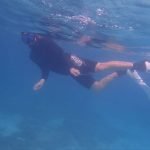
Snorkeling in Tioman Island for Beginners: A Guide to the Best Spots and Tips
July 29, 2024
How to Choose the Right Scuba Diving Equipment? A Comprehensive Guide
July 29, 2024
Decompression sickness (DCS), often known as "the bends," is a potentially serious condition that can affect divers, aviators, and astronauts. It occurs when dissolved gases, primarily nitrogen, come out of solution in the body's tissues and form bubbles. These bubbles can cause a range of symptoms, from mild discomfort to life-threatening complications. Understanding decompression sickness is crucial for anyone involved in activities that involve changes in pressure, such as scuba diving.
How Does Decompression Sickness Occur?
Decompression sickness is caused by a rapid decrease in pressure around the body. During a dive, the body absorbs nitrogen from the breathing gas mixture. The deeper and longer the dive, the more nitrogen is absorbed. As a diver ascends, the pressure decreases, and the nitrogen begins to come out of solution. If the ascent is too rapid, the nitrogen forms bubbles in the tissues and bloodstream, leading to DCS.
Symptoms of Decompression Sickness
The symptoms of decompression sickness can vary widely depending on the location and size of the bubbles. They may include:
- Joint and Muscle Pain: Often described as a deep, dull ache, this is the most common symptom and typically affects the arms and legs.
- Neurological Symptoms: These can include numbness, tingling, dizziness, confusion, and, in severe cases, paralysis or unconsciousness.
- Skin Symptoms: A rash, itching, or mottling of the skin may occur.
- Respiratory Symptoms: Difficulty breathing or a dry cough can indicate more severe DCS affecting the lungs.
Preventing Decompression Sickness
Prevention is the best approach to dealing with decompression sickness. Divers can reduce their risk by:
- Adhering to Dive Tables and Computers: Following safe dive profiles and ascent rates as recommended by dive tables or dive computers is crucial.
- Safety Stops: Performing a safety stop for 3-5 minutes at 15-20 feet (5-6 meters) can help off-gas nitrogen more safely.
- Avoiding Exertion After Diving: Physical exertion can increase the risk of DCS as it may promote bubble formation.
- Proper Hydration: Staying hydrated can help reduce the risk of DCS by promoting better circulation.
Treatment of Decompression Sickness
If decompression sickness is suspected, it is essential to seek medical attention immediately. The primary treatment for DCS is hyperbaric oxygen therapy, where the patient breathes pure oxygen in a pressurized chamber. This treatment helps reduce the size of the nitrogen bubbles and promotes their absorption back into the tissues.
Decompression sickness is a preventable condition that can have serious consequences if not properly managed. By understanding the causes, symptoms, and preventive measures, divers can enjoy their underwater experiences safely. Always prioritize safety, adhere to proper diving protocols, and seek immediate medical help if you suspect DCS. Remember, prevention and prompt treatment are key to a full recovery and continued enjoyment of diving adventures.
For more information on diving safety and training, consider exploring PADI courses offered by certified providers. Safe diving!



